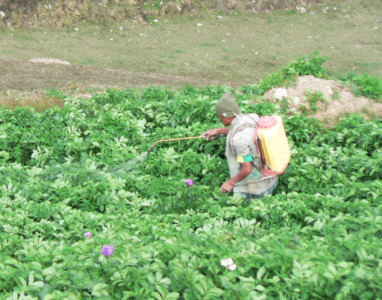An app to help potato farmers reduce agrochemical use
Developing late-blight resistant potatoes has long been a priority for breeders, and hundreds of resistant varieties have been released in the past century. However, because of the pathogen’s ability to evolve ways to overcome the resistance of widely cultivated varieties, farmers still need to apply fungicides, and it is hard for them to know when and how much to apply.
“In some parts of the world, late blight may completely destroy farmers’ potato crops, threating their food security and incomes,” said International Potato Center (CIP) plant pathologist Willmer Perez.
Perez and colleagues have developed an easy-to-use decision support tool to help farmers optimize their fungicide use, in order to ensure good harvests while reducing production costs and health and environmental risks. The tool, which is customized for each country, uses information on the late blight-susceptibility levels of local varieties, the effectiveness of locally-available fungicides, and local weather data to provide farmers with advice on when to apply those agrochemicals.
Read the full article An app to help potato farmers reduce agrochemical use from the International Potato Center.
October 18, 2020
International Potato Center (CIP)





